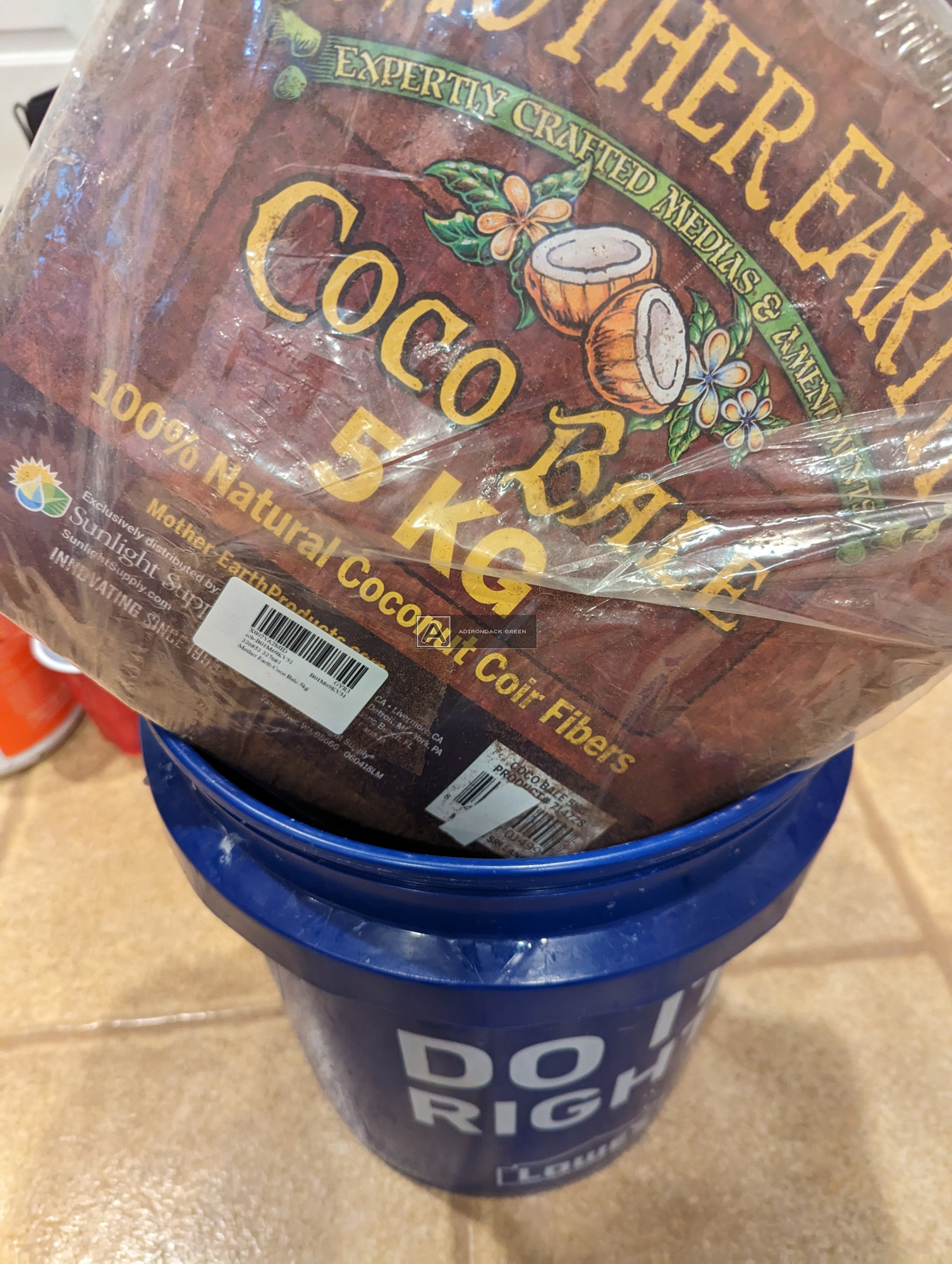This article is ideal for anyone new to Coco Coir and has questions about preparing coco to grow cannabis.

(P.S. not my choice of coco ^ , see review)
Coco Coir vs Soil as a Medium
Coco is unique from soil in a few major ways, that is beneficial for growers.
- Coco coir is nutrient inert. This means whatever you put in goes directly to plant. Soil depends on microorganisms to break-down and convert feed.
- Coco coir can not be overwatered. Reputable coco even comes with saturation levels (usually 55-70%), and the coco simply will not hold more water, leaving at least SOME air and oxygen. Perlite is a common addition to balance saturation and retention.
- Coco coir has greedy cation exchange sites. This the exception to the first rule above. As adding certain salts like Calcium and Magnesium are SWAPPED for the high amount of Potassium that naturally occurs in coco coir.
Soaking
Some coco arrives as dry compressed 'bricks' that need to be soaked first, then rinsed. The usually do something like 1:1 or 1:2 their volume in water. My opinion is to save any calmag or pH balancing in this step, since the coco will see 10x this much dosed water later on.

Rinsing
Before diving into the science of cation exchange capacity (CEC), we'll cover rinsing. Think of rinsing just as you would a car or your dishes. It's not clean, but you knocked off some big chunks and have it ready to wash.
Rinsing or flushing your coco coir with clean, pH-neutral water removes excess salts, primarily potassium (K+) with is so prevalent in this coastal product. But rinsing only removes the loose salts, it will do nothing for the large amount of K+ still ionically bonded to the coco, waiting to poison your plant when it can get a tastier salt like Calcium or Magnesium.
Wait ! I thought adding Cal Mag was a good thing!? It's critical, READ ON!
The Science of Cation
While rinsing got the loose chunks, coco will naturally still have large amounts of Potassium ionically (electro attraction) attached to the coco. If they stayed there it would be cool. But they are attached to "Cation Exchange Sites" which are kind of like swingers. They'll readily swap for any nearby positively charged salt, based on concentration.
Meaning? You're party is lop-sided. Everyone works in finance and the small talk is terrible.
Buffering
The fix is to introduce a wave of new friends, also positively charged salts, but more exotic. They will be more attractive to the cation exchange site, and grabbed up. i.e. Your friend Calcium does rigging for mile-long bridges and their cousin Magnesium works for a major celebrity or sports or whatever.
As these new folks are introduced the cation exchange sites readily seek new conversation, leaving a group of lonely financiers to be pushed out the door.
So Buffering uses a HIGH CONCENTRATION OF ALTERNATE CATIONS (salts) to exchange for the naturally occurring Potassium. This is done with CalMag mixes in high dose.

So what?
So it's important you do this BEFORE the guest of honor (i,.e the plant or seedling) and their entourage of fertigation arrives. Get the naturally occurring salts to SWAP NOW, BEFORE WE START FEEDING ensures that entourage sticks with the plant. i.e. As we add Calcium and Magnesium later on, it goes to the plant, and not the coco. Otherwise the exchange will occur on each feed, and end up with Calcium and Magnesium deficiency while also having Potassium toxicity.
** Buffering is usually done multiple times; as each time the concentration of Potassium is reduced, but not eliminated.
WHY? See video (Age restricted, open in Youtube).
Flushing
Flushing is something done irregardless of medium coco or soil. Flushing is to use a pH balanced (but nutrient inert) water and drain (usually top to bottom) an in progress plant's medium. The goal is typically correcting pH imbalance (run off should match desired pH), or to correct an overfeed of salt based nutrients.
The most common use case for flushing is last week or two of flowering, to remove any unused salts from the plants circulation before cutting, drying, and curing the plant for buds.
